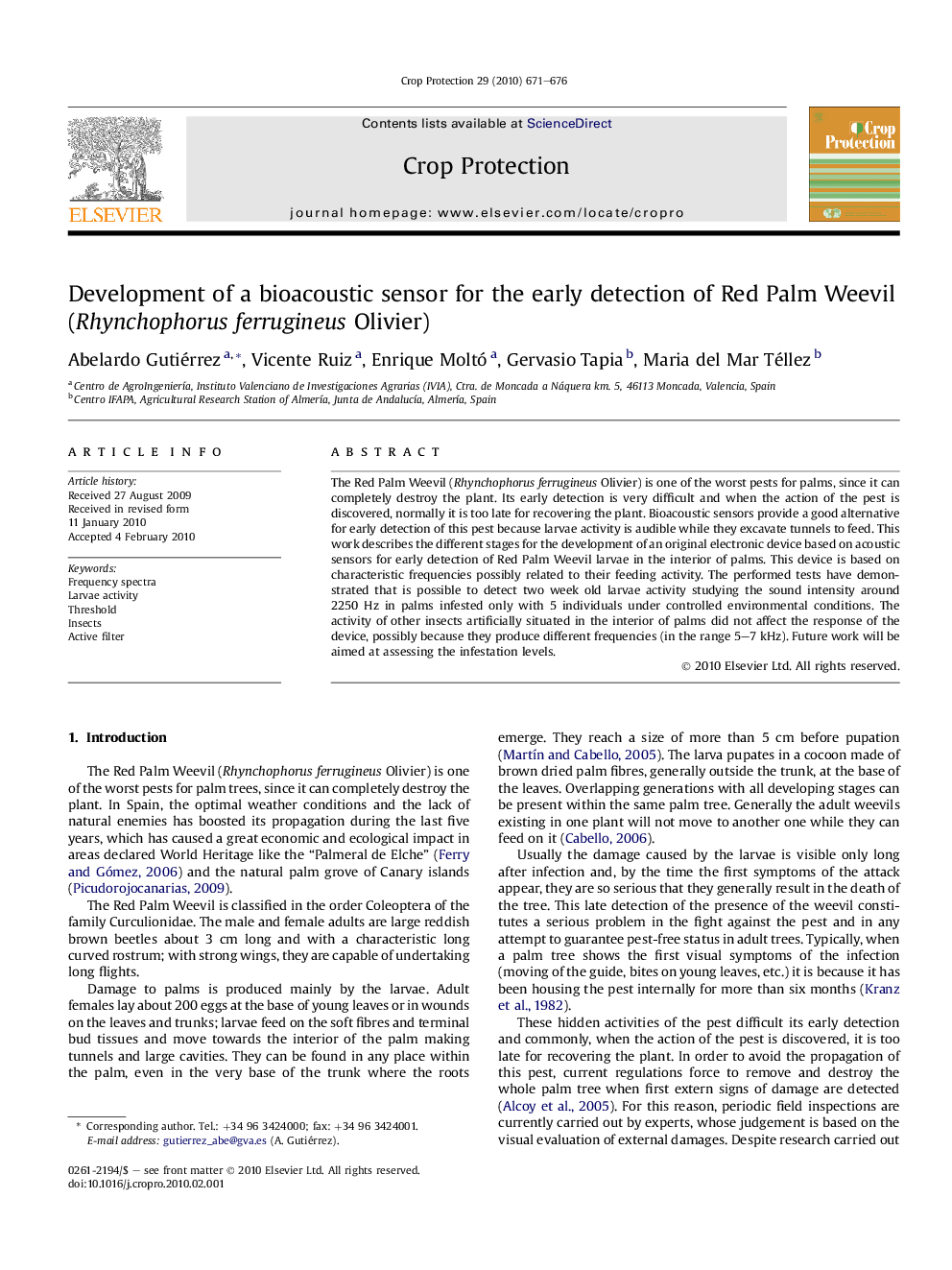| Article ID | Journal | Published Year | Pages | File Type |
|---|---|---|---|---|
| 4506789 | Crop Protection | 2010 | 6 Pages |
Abstract
The Red Palm Weevil (Rhynchophorus ferrugineus Olivier) is one of the worst pests for palms, since it can completely destroy the plant. Its early detection is very difficult and when the action of the pest is discovered, normally it is too late for recovering the plant. Bioacoustic sensors provide a good alternative for early detection of this pest because larvae activity is audible while they excavate tunnels to feed. This work describes the different stages for the development of an original electronic device based on acoustic sensors for early detection of Red Palm Weevil larvae in the interior of palms. This device is based on characteristic frequencies possibly related to their feeding activity. The performed tests have demonstrated that is possible to detect two week old larvae activity studying the sound intensity around 2250Â Hz in palms infested only with 5 individuals under controlled environmental conditions. The activity of other insects artificially situated in the interior of palms did not affect the response of the device, possibly because they produce different frequencies (in the range 5-7Â kHz). Future work will be aimed at assessing the infestation levels.
Related Topics
Life Sciences
Agricultural and Biological Sciences
Agronomy and Crop Science
Authors
Abelardo Gutiérrez, Vicente Ruiz, Enrique Moltó, Gervasio Tapia, Maria del Mar Téllez,
